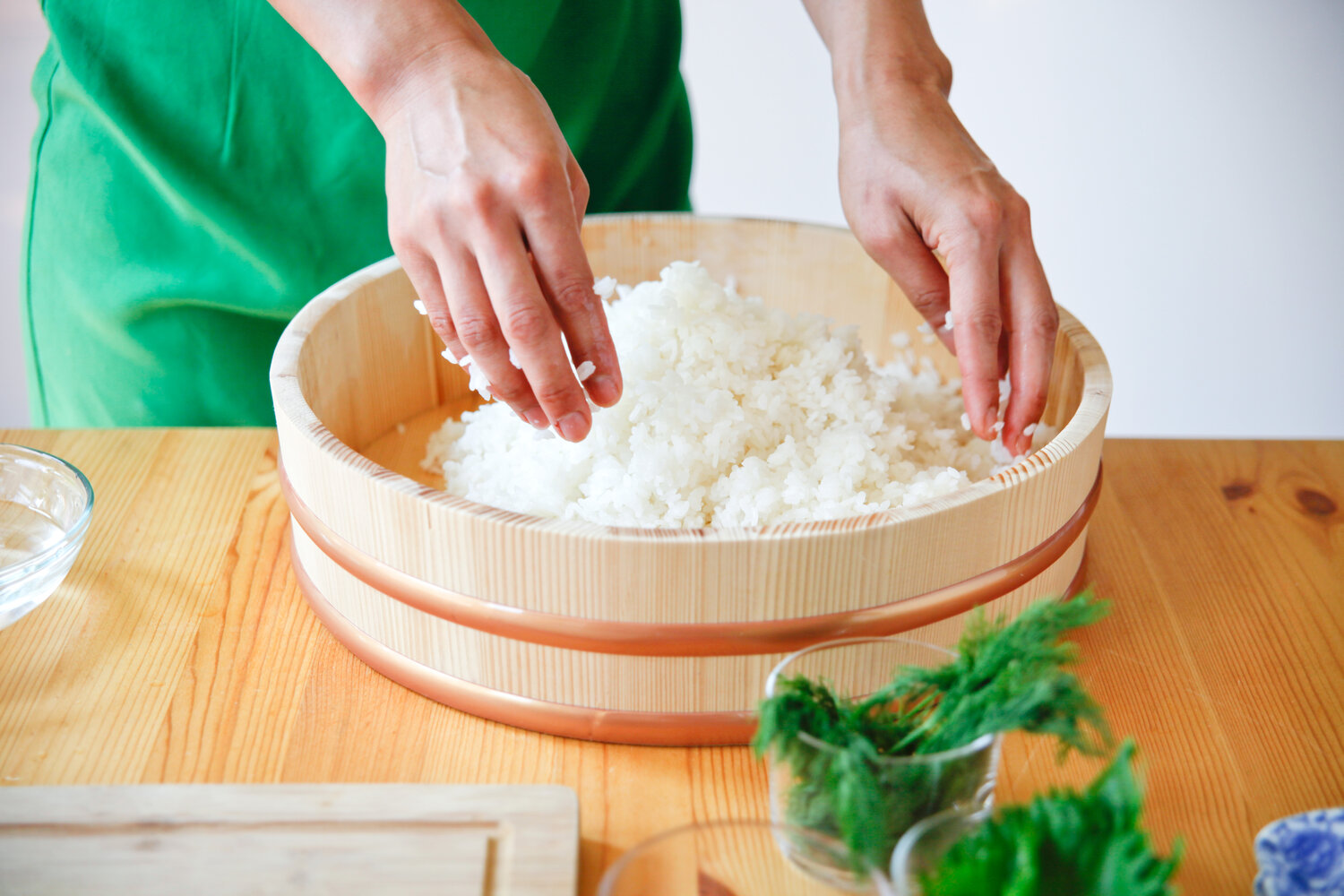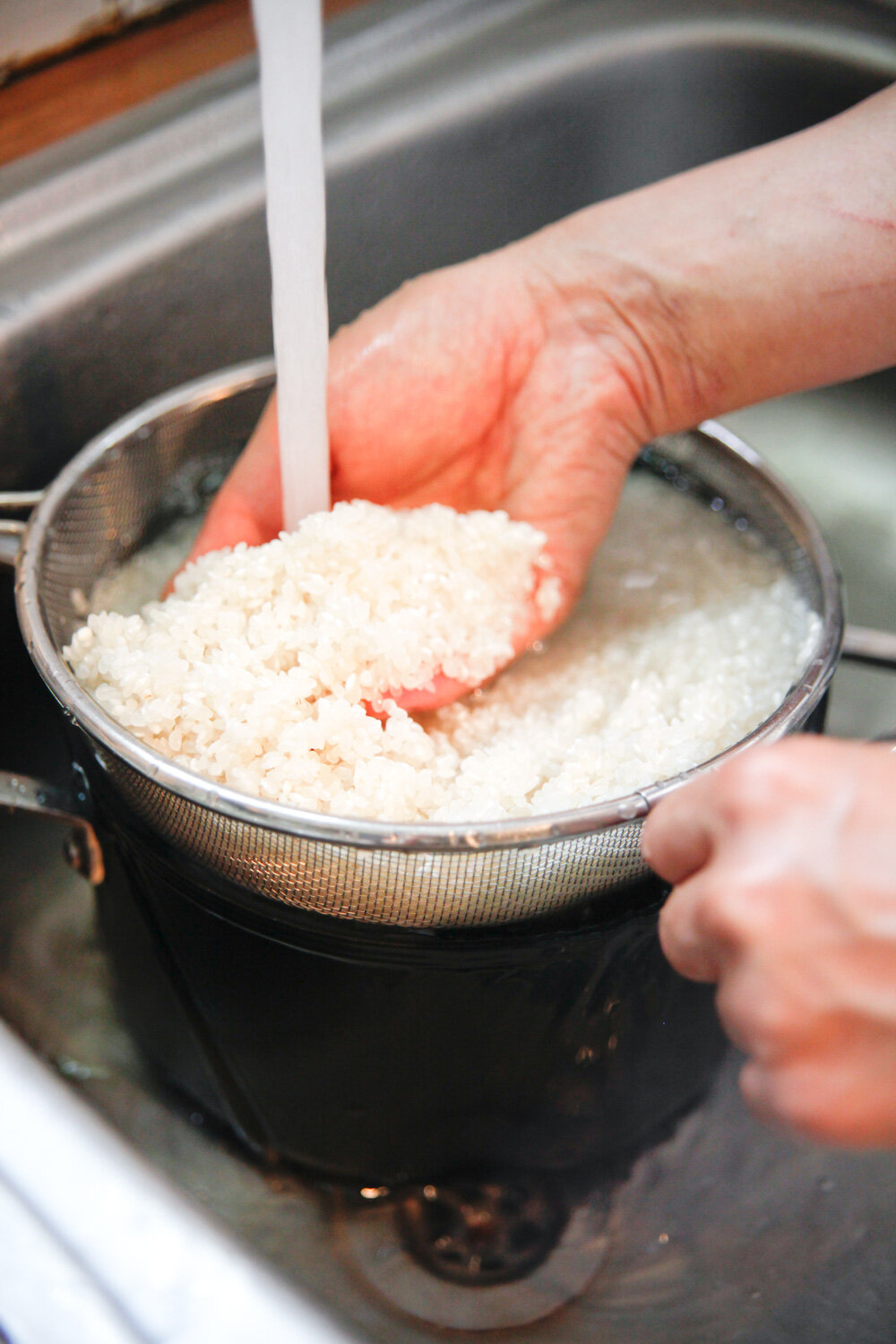Perfect Japanese Steamed Rice
Rice is a serious subject for the Japanese. Just as Italian people are passionate about risotto – its consistency and how al dente it is – Japanese people are mad about rice. When I go to a sushi restaurant with my family or friends, we talk about the rice quality as much as the quality of the fish. All Japanese families have a favourite brand and have been known to boast to their neighbours about what kind of rice they buy, Sasanishiki and Koshihikari being two of the tastiest, most desired brands.
We eat rice at every meal – and also, for a light meal or snack, in the form of rice balls, onigiri, or sprinkled with the Japanese seasoning furikake, or with pickles. Even though rice is a staple and a part of everyday life, the humble grain can be elevated to new heights depending on how you cook it, what brand you use, when the rice was harvested and what season you eat it in. Excellent rice in Japan, is on a similar level to top quality sourdough bread in the UK. It may be a staple, but done really well it can be outstanding. European rice tends to be highly dehydrated and stored for long periods of time before it is sold. In Japan we know that the tastiest rice has a high water content and should be eaten in the same year that it is harvested.
Shinmai, which translates as “New Rice”, refers to the newest harvest of rice of that year. Rice is produced in all regions in Japan. The Shinmai season starts in late August in the South and continues into October the further North you go. Shinmai is a celebrated time of year in the Japanese calendar because the rice has a high water content that makes it taste wonderfully fresh and delicious. Since I moved to the UK I haven’t been able to import this treasured rice from Japan but every time my Mum comes to visit she brings me a little bag of it, a tasty reminder of this precious Japanese produce.
When I’m making Japanese steamed rice, or “gohan” as it’s known in Japanese, I use a quality Italian grown Japanese rice, such as this organic sushi rice from Clearspring. I find that by adding a little more water to my recipe I can achieve the plump, fluffy grains that I associate with my home country. I’m a bit of a rice geek so I’ve added some detailed instructions below so you can have a go at home!
Follow @yukiskitchen on Instagram
Yuki’s Guide to making perfect Japanese steamed rice
Use the right water.
Soft water is better for making perfect rice, if you live in a hard water area try adding a pinch of salt to your water or use filtered water.
Wash the rice correctly.
Washing the rice thoroughly for at least 2 minutes, or until the water runs clear, ensures you remove some of the starch but also allows you to clean the bacillus bacteria from the grains and reduce the risk of food poisoning. Rice is a high-risk food so in Japan we prepare our rice carefully to ensure it is perfectly safe to eat.
Soak the rice
Soak the rice for at least 30 minutes, it can even be left over night but I prefer to soak it for 2 – 3 hours. This step allows the rice grains to start hydrating before the heat is applied.
Choose your pan
A heavy pan is your friend when cooking rice. Heavier saucepans, such as a copper or cast iron pot, will help distribute the heat evenly and prevent the rice from sticking to the bottom whilst cooking.
Measure accurately
This is no time to “guesstimate” the quantities. I like to use cups to measure the volume of rice because it’s quick and easy and ensures the measurements are accurate each time.

Perfect Japanese Steamed Rice Recipe
Ingredients
- 2 cups of Japanese rice
- 2 cups water
Instructions
- First wash the rice thoroughly in a sieve for a couple minutes, gently turning it over by hand until the water runs clear.
- Drain the rice and put it into a pot with 2 cups of water.
- Leave it to stand for a minimum of 30 minutes. It can be left overnight, but for best results I recommend leaving it for 1 to 2 hours.
- After soaking, leave the water in the pot and bring the rice to the boil.
- Put the lid on, reduce the heat and let it simmer for 8 minutes.
- Remove from the heat and let it stand with the lid on for a further 5 minutes. Do not open the lid.
- After the time is up open the lid and mix gently with Spatula or “Shamoji” – a Japanese wooden spoon.
- Serve alongside your main of choice or shaped into Onigiri. Your rice should be fluffy, sticky and still a little al dente.










